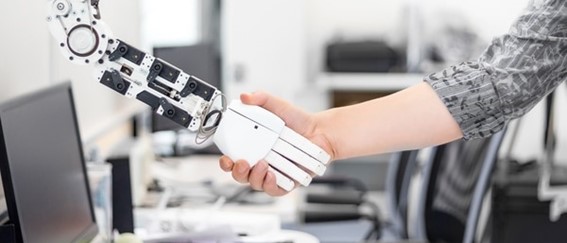Note: This blog post was originally written in Japanese for our Japanese website. We used our machine translation platform Translation Designer to translate it and post-edit the content in English. The original Japanese post can be found here.
We hope everyone enjoyed our previous blog in this series. This time we would like to touch on some things that we couldn't cover last time.
| For those who missed it, check out part 1 here: Machine Translation Vs. Human Translation Part 1: Are We Being Replaced? |
Before we dive into part 2, let's recap what we talked about before. In part 1, we came to a conclusion that translators won't lose their jobs due to three factors. Also, we shared our view on the future of professional translation services. Some translators may have felt uneasy with what we wrote: "With more advancement in AI, a ridiculously high-performance machine translation technology that exceeds our imagination might appear in the near future." Let's follow up on this point.
So... we want to let our fellow translators know... about this ridiculously high-performance machine translation technology... which is not available yet! Yes, no need to worry! Although we want to make it clear that this is as of the time of writing (2020), it is no exaggeration to say that there will be sufficient demand for human translation in the future. However, we cannot promise that there won't be an innovative machine translation by the time you read this post. That is to say, machine translation technology is advancing day by day, and we all need to understand that.
Now, let's finally dive into part 2. In this post, we will share our views on how to use human translation and machine translation services in different situations. We will also touch on how to successfully thrive through this turbulent translation era at the end.

Effective situations for machine and human are different
It is said that the demand for machine translation services has been increasing in recent years, but in what kind of situation are they actually used? Let's explore the different needs of machine translation and human translation services.

When is machine translation effective?
Machine translation services are frequently used for translating materials intended for information sharing and briefly understanding the content. The service is becoming more popular with these so-called reference materials, which do not require high-quality translations.
Effective situations:
・ Emails
・ Materials for internal use only such as handbooks and instructions
・ Specifications
・ Guidelines
・ Legal documents
Looking at this list alone, it may give the impression that machine translation services are mainly for translating reference materials, but of course, they are used for other purposes as well.
For example, you can use machine translation to get a rough translation and then post-edit that output with a high editing quality. We call it machine translation with post-editing. By doing so, the quality will be much better than raw machine translation, closer to ones done by human.
In addition, some companies are trying to utilize machine translation for their user manuals, service manuals, and investor relations documents that are shared outside of the company. As machine translation technology improves, its usage will continue to expand.
There is no doubt that machine translation services have various possibilities in the future. However, it is too early to lay heavy expectations on machine translation services. Considering that errors specific to machine translation will still occur, we must say that post editing work and other human intervention is still required.
When is human translation effective?
On the other hand, human translation services are used for materials that link directly to the corporate image, requiring higher translation quality. These are materials that companies present to the outside world as their official information. They still mainly remain in the scope of human translation services.
Effective situations:
・ Corporate collateral such as corporate brochures and product catalogs
・ Website
・ Press releases
・ Newsletters
・ Marketing materials
All of the above are directly linked to your company's brand, so it is necessary to translate by using appropriate terms and tone. Also important is the finishing touches in consideration of readers. You can see that machine translation is not great at tackling these points. These insufficient capabilities lead to the need for human translation.
Even for materials that we listed for machine translation services, there are still many companies that want to use human translation services, considering readability. The fact is that these requests by companies generate the needs of human translation services.

In conclusion, although we have a general recommendation for which materials are suite for machine or human translation, there is no clear rule in reality. It can be said that the decision largely depends on the customer's preference and strategy. As long as the insufficient capabilities of machine translation remain, there will always be a need for human translation services, and of course, the demand for professional translators will not disappear. Furthermore, we can comfortably say that machine translation technology still has a long way to reach the same capabilities as human. It's reasonable to think that professional translators won't go out of business.
How to successfully thrive through this turbulent translation era
In the present time, where technology is advancing every day, it is a must to have translation skills superior to machine translation and your own expertise. In other words, the secret to successfully thrive through this turbulent translation era is to have a specialty that is unique to you.
It does not necessarily have to be directly linked to your translation skills. For example, it can be an ability to prevent translation errors by making full use of your IT knowledge and skills or an ability to master various computer-assisted translation (CAT) tools. Having these abilities will be your added value of work efficiency. To be extreme, it can be anything regardless of field as long as it matches the needs of the market.

Well, we probably got our point through. Let's recap and conclude this post.
- Machine translation technology has been improving, and it may be used for various purposes in the future. However, considering that errors specific to machine translation occur, it still needs human intervention.
- Demand for human translation services is high for materials that are directly linked to the corporate image and require readability.
- There is no clear line between the use of machine and human translation services, and it depends largely on the customer's preference and strategy, such as what the translation will be used for and who will be the reader.
- Since technology is advancing every day, the secret to successfully thrive through this turbulent translation era is to have a specialty that is unique to you.
Kawamura's translation services
Demand for machine translation with post-editing (MTPE) services is increasing more and more. With MTPE services, we make the best use of machine translation output to provide cost effective translations. Machine translation is the fastest and the most low-cost solution, but without any editing work, its quality may be insufficient for your translation purposes. By adding the post-editing process, our linguists will edit the content and adjust the translations so that the quality is closer to what you're looking for.
Although, we must say that machine translation with post-editing is not suitable for all contents and documents. Yet centering around localization, marketing translation and mass media translation work pretty well with post-editing. With the evolution and development of machine translation engines, the skills required of post-editors are gradually changing as well. We definitely have to keep an eye on the trends in machine translation and post-editing.
Kawamura has been taking on machine translation with post-editing projects from early days. Our post-editing service is backed by the knowledge gained from numerous projects and our experienced post-editors. We have professional post-editors who we can rely on for delivering accurate Japanese translation. Not only that, but we can also secure native-speaking post-editors for other Asian languages, European languages, and more. Every year, we are getting more and more requests for post-editing services in many languages, not limited to just English and Japanese.
Let us offer you various solutions for any kind of requests or issues you have. Feel free to contact us for a quote or any questions in general.
_CMYK_OL.png)

